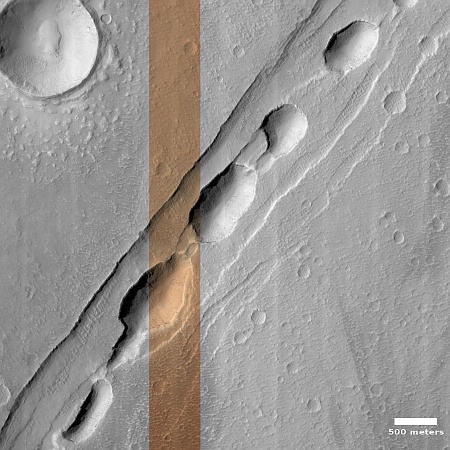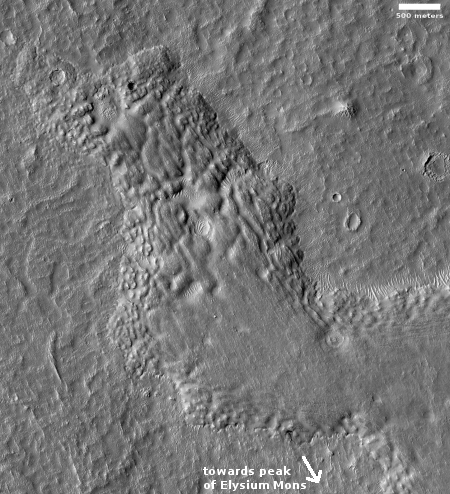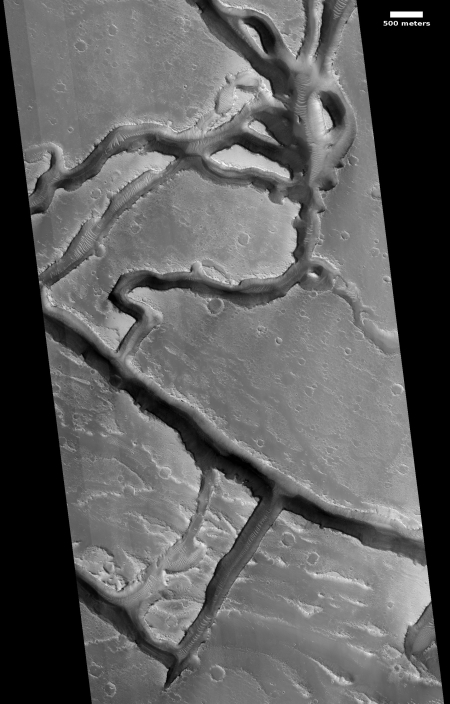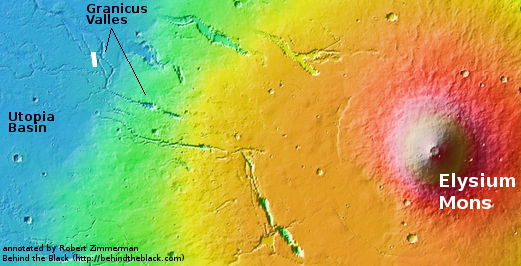The sagging flank of one of Mars’ giant volcanoes
Cool image time! The picture to the right, rotated, cropped, reduced, and sharpened to post here, was taken on May 1, 2025 by the high resolution camera on Mars Reconnaissance Orbiter (MRO). It shows what the science team labels a “chain of pit craters in [a] graben”.
A graben is a surface fissure created when the surface either spreads or two sections shift sideways in opposite directions. The chain of pits suggest that there is a larger void below into which the surface is sinking. It is also likely that a lot of the sinking material is volcanic ash, thrown free in an eruption hundreds of millions of years ago, which over the eons has been blown up to this location to settle in the crack to fill it. It is now trapped there, and sinking.
What caused the ground here to shift and create the fissure? In this case, the cause is quite large and massive, in a way that boggles the mind.
» Read more
Cool image time! The picture to the right, rotated, cropped, reduced, and sharpened to post here, was taken on May 1, 2025 by the high resolution camera on Mars Reconnaissance Orbiter (MRO). It shows what the science team labels a “chain of pit craters in [a] graben”.
A graben is a surface fissure created when the surface either spreads or two sections shift sideways in opposite directions. The chain of pits suggest that there is a larger void below into which the surface is sinking. It is also likely that a lot of the sinking material is volcanic ash, thrown free in an eruption hundreds of millions of years ago, which over the eons has been blown up to this location to settle in the crack to fill it. It is now trapped there, and sinking.
What caused the ground here to shift and create the fissure? In this case, the cause is quite large and massive, in a way that boggles the mind.
» Read more




